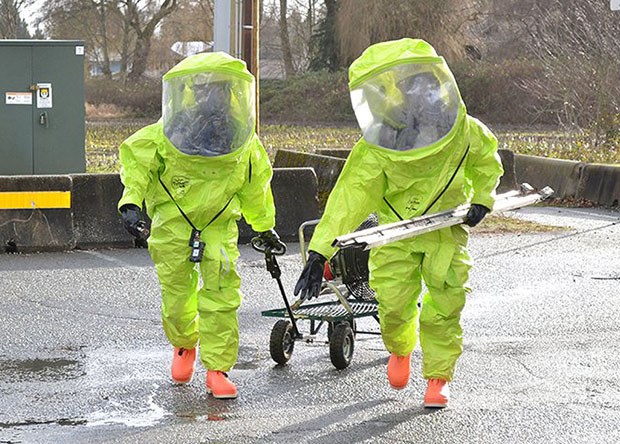Delta will be sticking with ammonia.
The city on Thursday coordinated an interagency emergency response exercise based on a simulated ammonia leak at South Delta Recreation Centre.
Ammonia is used in mechanical refrigeration systems, including those in ice rinks. It is used in liquid form but becomes a gas once released into the air. The colourless gas is toxic if inhaled.
The city notes the training exercise provided an opportunity for staff and stakeholders to practice their response and review emergency protocol for the safe evacuation and containment of a chemical leak. Adjacent community groups, schools, and businesses also took part in the exercise by reviewing their own procedures.
Delta’s contracted refrigeration plant maintenance provider also completed a full review of ammonia safe work policies and procedures.
Mayor Lois Jackson in a news release said they will ensure all safety requirements are met and staff are as well-prepared to respond to the unlikely event of an emergency.
The exercise was conducted in response to the Oct. 17 tragedy in Fernie, B.C. when three workers doing routine maintenance at an ice rink were killed by an ammonia leak.
Acting Delta city manager Ken Kuntz said they’re currently not looking at switching from ammonia to another coolant system.
“These are tried and true refrigeration systems and over the years with the WorkSafe and Technical Safety B.C. regulations we’ve had constant upgrades to the safety systems and even the way they’re configured,” he said.
“So, for example, you could have your refrigeration system co-mingled with where people came and went in the building. You can’t do any of that anymore. As we replace chillers and other large components, we’ve built separate rooms and separate alarm systems. There’s basically a triple safety system on them and we continue to upgrade as rules and regulations come along.”
Four years ago, an ammonia leak forced the shutdown of the Dawson Creek Curling Club and Memorial Arena. No one was hurt in that incident but the city decided to switch to a Freon coolant system.
A consultant’s report for Dawson Creek council noted the majority of refrigerated recreation facilities in Canada still use ammonia as a refrigerant. At one time that was universal, but over time approximately a quarter of facilities converted to Freon, while very few facilities use C02. Just 10 per cent of ice facilities use natural ice.
“The positives associated with ammonia are that it is a naturally occurring substance with no greenhouse gas impact, it heats/cools rapidly and efficiently and its systems are compatible with refrigeration systems in the natural gas industry….The negatives associated with ammonia are that it is a deadly toxin if released as gas. Any unprotected human contact with ammonia gas will result in death or serious permanent impairment. It also has a very small molecular structure, so it escapes confinement more easily than the alternative refrigerant.”
The positives associated with Freon are that it is non-toxic and non-corrosive. There are no public safety issues or employee safety issues associated with its use, but the system is more expensive at first, the report notes.



